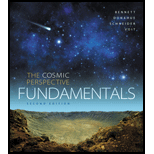
The source which continues to contribute to Earth's internal heat.
Answer to Problem 1QQ
Option (b). Radioactive decay
Explanation of Solution
Accretion on Earth occurs in the early stages. Planetesimal bombardment is deposited due to gravity toward the core of the Earth. Gravity has a major role in accretion where gravitational potential energy is converted into thermal energy. Accretion cannot be the continuous heat source of internal energy.
Thus, option (a) is incorrect.
The sunlight falls on the Earth, heats the land, ocean, and atmosphere but does not reach and warms the interior. Heated rocks in the Earth's crust act as an insulator and prevent the heat transfer from outside towards the inner side. Sunlight cannot be the continuous heat source of internal energy.
Thus, option (c) is incorrect.
Radioactive decay in Earth's mantle convert parent element decay into daughter isotopes and release heat. This released heat flows from the interior to the surface of the Earth slowly and continuously through
Thus, option (b) is correct.
Want to see more full solutions like this?
Chapter 5 Solutions
The Cosmic Perspective Fundamentals (2nd Edition)
- QUESTIONS 1. a) The earth's inner core is just a few hundreds of degrees less than the temperature of the Sun: about 5200 degrees Celsius versus about 6000 Degrees Celsius. With that much heat in the centre of the earth, why is it still possible for life to exist on the surface of the earth? b) How is the heat in the earth's centre able to melt the outer core but not the inner core? 2). a). Describe the Goldsmith Classification of element. b). Describe how Goldsmith rules are used to classify Elements. c). Describe how the bonding types and magma differentiation aids in the distribution of trace elements in the Eartharrow_forwardH does the increasing abundance of CO2 in Earth’s atmosphere cause a rise in Earth’s temperature’arrow_forwardChoose the BEST answer to the following: The surface of planet Earth loses energy to outer space due mostly to (a) conduction. (b) convection. (c) radiation. (d) radioactivity.arrow_forward
- Choose the BEST answer to the following: The principal source of Earth’s internal energy is (a) tidal friction. (b) gravitational pressure. (c) radioactivity. (d) geothermal heat.arrow_forward31) What evidence indicates that the climate of Mars has cyclical changes?arrow_forwardThe fraction of the energy flux received which is reflected into space is the albedo of Venus, av, which is about 0.76. The fraction of the energy flux which is absorbed is then (1-av) = 1. - 0.76 = 0.24. So the amount of energy actually absorbed by Venus in each second is Lv = (1-av)Ev. Lv = (1-av)Ev = ___________________ ergs/s And next calculate the effective temperature of Venus: Tv4 = (Lv/(4pdv2))/s = Lv/(4spdv2) = __________________ K4 and taking the square root of Tv4 twice in succession we get the effective Temperature Tv: Tv = [Lv/(4spdv2)]0.25 = _________________ K Calculate Venus' emittance assuming that the Venus' actual temperature, Tvr, is 472o C = 745 K: ev = Lv/(4pdv2s Tvr4) = __________________ .arrow_forward
- what is h^2?arrow_forwardCompare the current atmospheres of Earth, Venus, and Mars in terms of composition, thickness (and pressure at the surface), and the greenhouse effect.arrow_forwardSuppose a major impact that produces a mass extinction takes place on Earth once every 5 million years. Suppose further that if such an event occurred today, you and most other humans would be killed (this would be true even if the human species as a whole survived). Such impact events are random, and one could take place at any time. Calculate the probability that such an impact will occur within the next 50 years (within your lifetime).arrow_forward
- Do you think Earth could retain an atmosphere of nitrogen for the age of the Solar System? Explain why or why notarrow_forwardWhat do you mean by Natural greenhouse effect and Man made greenhouse effect? Which one is better for sustenance of life on earth? Give any two justificationsarrow_forwardThe US had 264 billion barrels of oil in reserve at the end of 2019. Us annual energy consumption is 1.0 x 1020 joules and energy released by burning a liter of oil is 1.2 x 107 joules. How long can the US run on its reserves? Use the conversion 1 barrel = 159 liters.arrow_forward
 Horizons: Exploring the Universe (MindTap Course ...PhysicsISBN:9781305960961Author:Michael A. Seeds, Dana BackmanPublisher:Cengage Learning
Horizons: Exploring the Universe (MindTap Course ...PhysicsISBN:9781305960961Author:Michael A. Seeds, Dana BackmanPublisher:Cengage Learning AstronomyPhysicsISBN:9781938168284Author:Andrew Fraknoi; David Morrison; Sidney C. WolffPublisher:OpenStax
AstronomyPhysicsISBN:9781938168284Author:Andrew Fraknoi; David Morrison; Sidney C. WolffPublisher:OpenStax Physics for Scientists and Engineers: Foundations...PhysicsISBN:9781133939146Author:Katz, Debora M.Publisher:Cengage Learning
Physics for Scientists and Engineers: Foundations...PhysicsISBN:9781133939146Author:Katz, Debora M.Publisher:Cengage Learning


